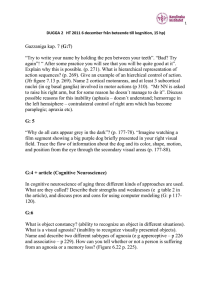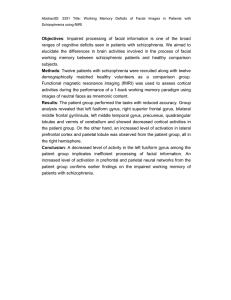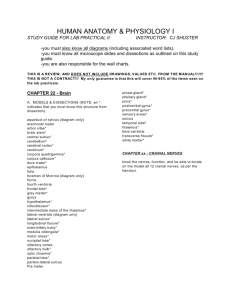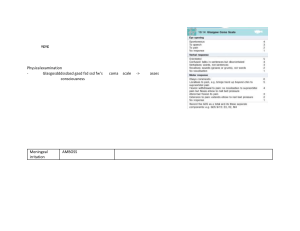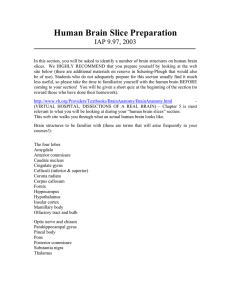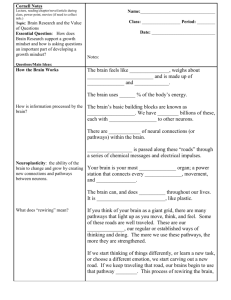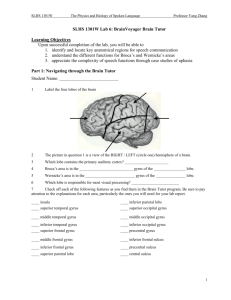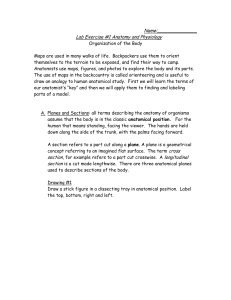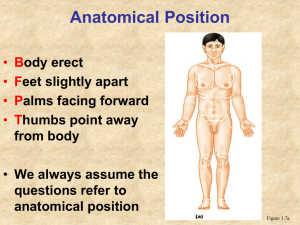Neuroanatomy Final 2015 FOR-CREDIT STUDENTS: Return to
advertisement
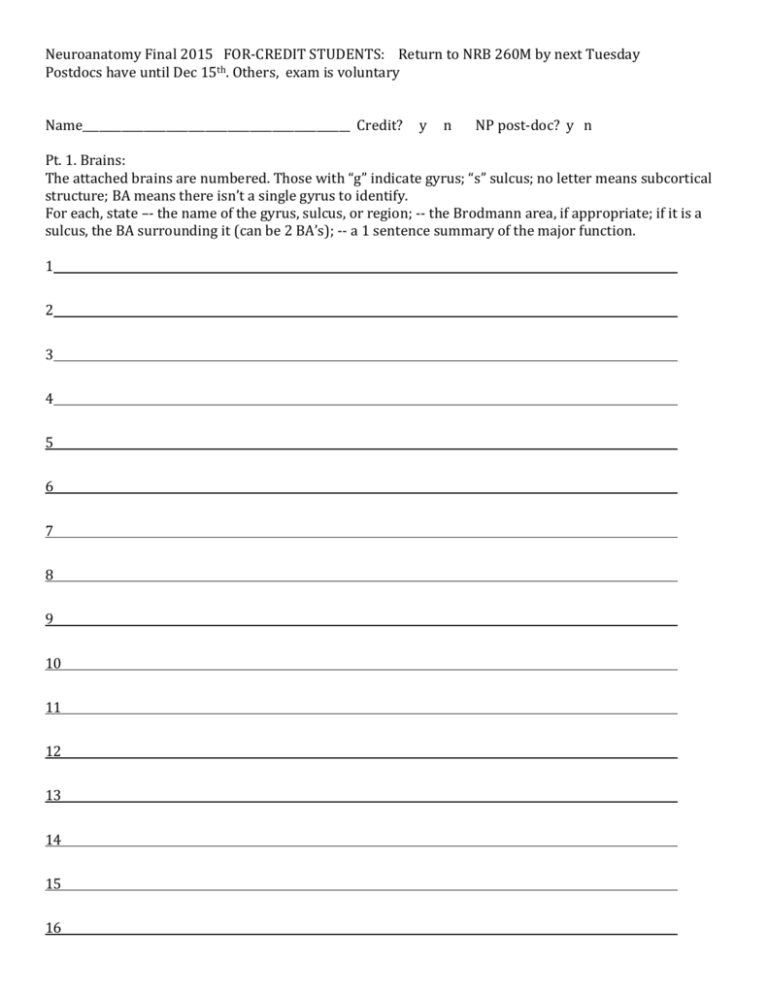
Neuroanatomy Final 2015 FOR-CREDIT STUDENTS: Return to NRB 260M by next Tuesday Postdocs have until Dec 15th. Others, exam is voluntary Name________________________________________________ Credit? y n NP post-doc? y n Pt. 1. Brains: The attached brains are numbered. Those with “g” indicate gyrus; “s” sulcus; no letter means subcortical structure; BA means there isn’t a single gyrus to identify. For each, state –- the name of the gyrus, sulcus, or region; -- the Brodmann area, if appropriate; if it is a sulcus, the BA surrounding it (can be 2 BA’s); -- a 1 sentence summary of the major function. 1 2 3 4 5 6 7 8 9 10 11 12 13 14 15 16 17 18 19 20 21 22 23 24 25 26 27 28 29 30 31 32 33 34 35 36 37 38 39 40 Essay/Short answer 1. Describe the anatomical and functional difference between anomia and agnosia. Name 3 types of agnosia. 2. What is the major functional difference between the dorsal and ventral visual streams? What are the major organizational systems within the ventral stream? Include specific relation to anatomical location 3. What are three primary nodes of the social brain, and what role does each play? 4. What do we mean by the high road and the low road in the fear system AKA direct and indirect pathways? What anatomical structures are key to this system? 5. What neuroanatomy underlies Parkinson’s disease and Huntington’s disease? What are the major features of each? 6. What are the unique contributions of the frontal lobe to memory? How would you distinguish a hippocampal based memory impairment from a frontal based impairment? 7. Outline the anatomy and primary function of the hippocampus. How do subregions of the HC differ in their contributions to memory 8. How does the striatum (BG) contribute to memory? How is this different from other memory systems? 9. What brain regions contribute to an expressive vs. a receptive aphasia? What are the characteristics of these aphasias and how do they differ? 10. State the major reading pathways in the brain. How does learning to read differ from experienced reading with respect to these pathways? Name two acquired alexic syndromes and how they relate to reading anatomy. 11. Write a brief description of any functional system not discussed above that you think is cool.

